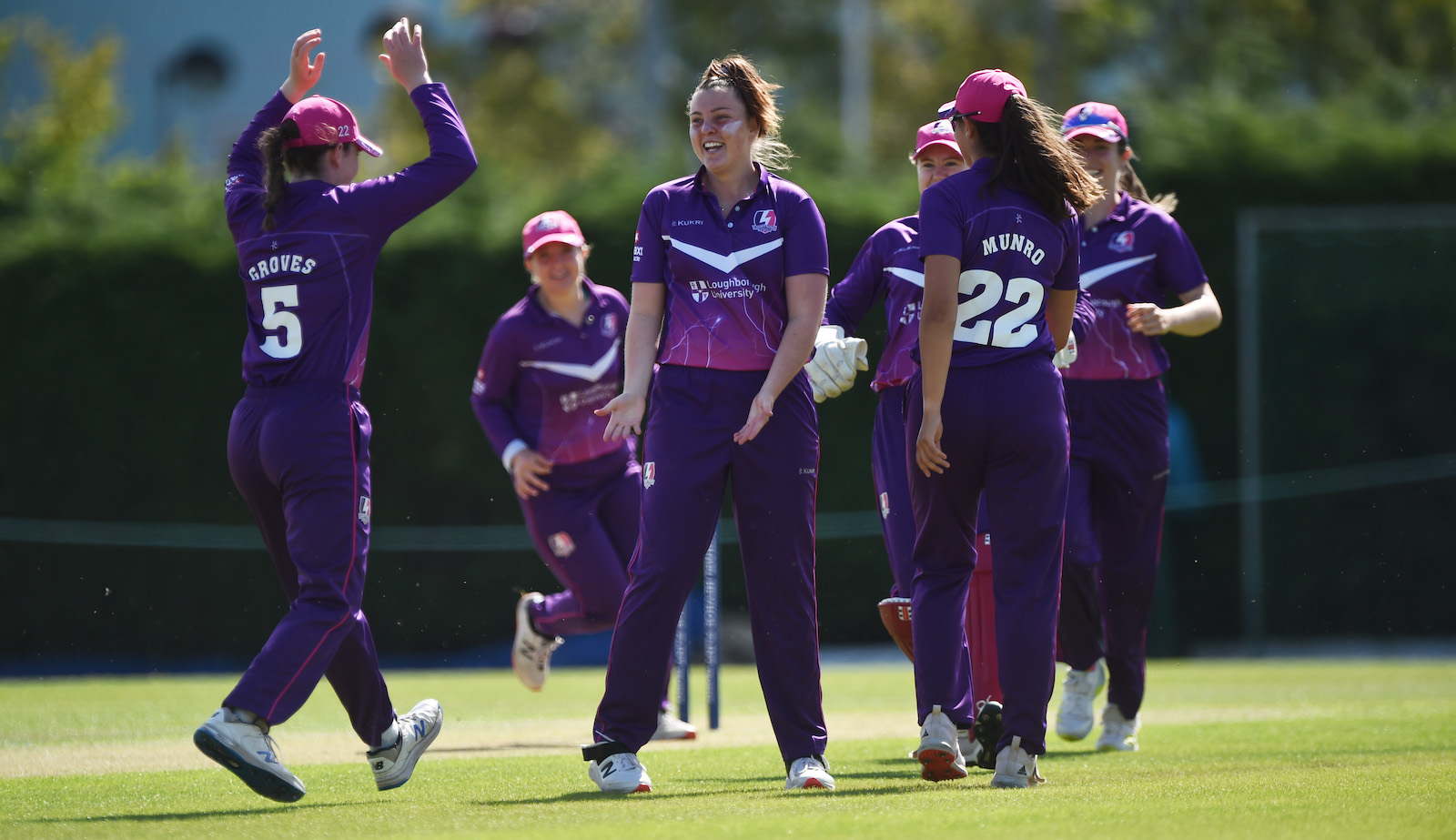How Cricket’s Anne Sharpe uses Athlete Monitoring to improve performance
Over the last few seasons Anne Sharpe, a leading cricket strength and conditioning coach, has been using Catapult’s elite athlete monitoring system, Vector, to gather sport-specific metrics that help to improve performance, mitigate the risk of injuries, and enable players to peak at the right times during the season.
This past season, Sharpe has harnessed Catapult’s cricket-specific analytics suite in her role with Loughborough Lightning. The analytics are specifically designed to measure the loads being placed on seamer bowlers in training and games.

Catapult X Cricket-Specific Algorithms
Catapult worked with a number of the world’s leading cricket teams to build the first sport-specific set of athlete monitoring metrics. During the development of this algorithm, Catapult worked with Cricket Australia and the English Cricket Board (ECB) on a landmark project to develop a unique fast-bowling algorithm.
Designed to automatically recognise deliveries by fast bowlers using the inertial sensors within Catapult GPS units, the algorithm quantifies the loads bowlers are placing on their bodies.
–> Click here to empower your team with this cricket-specific technology.
This information is used to establish match demands and ensure that bowlers are fully prepared for the rigours of competition. The data is also used to benchmark individual players, helping users adopt a data-driven approach as part of their rehabilitation processes. The data allows users to compare athletes against pre-injured norms so they are only introduced to match intensities when they are deemed ready.
“Catapult technology has the ability to track the maximum speed and impact incurred per bowling effort, this allows me to work with each bowler individually and show them what they need to improve and be doing for each bowl to achieve the desired results,” said Sharpe.
“In addition I can use the GPS units to monitor distance traveled, max speed, and the number of accelerations and decelerations while fielding giving me a clearer picture of load monitoring.”
–> To arrange a demo of the cricket-specific solution, click here.
Load Monitoring – Tailoring metrics to players
The Catapult Vector vests that Sharpe uses on her players have an integrated heart rate monitor allowing Sharpe to obtain athlete’s heart rate response to training, enabling the team to objectively measure and quantify training and/or match play.
Sharpe also gets real-time feedback with the athlete monitoring devices, offering the coaches the opportunity to manipulate training sessions accordingly. This technology enables Sharpe to look at how much someone’s running, and how far they’ve run in total and decide what course of action to take with her players in order to maximize their performance.
“After using Catapult, load monitoring became clearer to the coaches and players. Because of all the metrics we get from the GPS unit we know the exact workload of every athlete in each session. We are able to understand the difference between training numbers and match time numbers,” said Sharpe.
“The data coming from the Catapult GPS units are crucial for me in my role as they allow me to use all the powerful data that Catapult provides me with to monitor the player loads, get the players to perform to their peak in games, recover and then be able to perform again.”
How to get Coach Buy In
Getting coaches to buy into using the technology can be difficult at first. But Sharpe suggested the benefits outweigh the negatives.
“I am always trying to create buy-in and that means to continuously educating both the staff and the players. It is absolutely crucial that I bring the info to them in a way that they can understand. We are here to support the coaches and athletes,” said Sharpe.
Using player-derived data has helped Sharpe create buy-in for the team coaches as they can objectively back up their decisions and move forward in a way that best supports the overall team to improve their performance.
“My job is to inform the coaches and athletes of the appropriate information and my interpretation of that. Ultimately the final decision lays with the coach, whether that is or isn’t in line with what the data says [speaking specifically around selection and training session design]. But over time, the data allows me to make small impacts and influence the process that goes into those decisions.”
Catapult’s Cricket Algorithm in Practice: Hannah Jowitt, England Cricket
To learn more about Catapult’s cricket-specific analytics watch the webinar below. This webinar was titled “Using Catapult in Cricket: From development to practical application”.
Click here to learn more about Catapult’s cricket-specific performance solutions.
Catapult’s Role in Enhancing Cricket World Cup Performance
Catapult has emerged as a crucial partner for Cricket World Cup 2023 teams, playing a pivotal role in enhancing player performance and strategy.
With advanced athlete-monitoring devices, coaches gain vital insights into player workload and injury risk management, particularly for teams like India, Australia, New Zealand, and South Africa. Insights from Andrew Weller, Australia’s Physical Performance Manager, underscore the importance of metrics in preparing for different cricket formats and ensuring peak performance.
Catapult’s technology is not just revolutionising cricket strategy but also aiding in effective injury recovery, proving essential in the quest for victory at the Cricket World Cup ODI 2023. Discover more about Catapult’s transformative role in cricket on our detailed blog. Speak to the Catapult team about our solutions for Cricket teams.